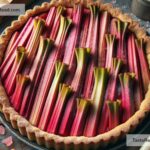The Fascinating History of Pumpkins in Native American Diets
Pumpkins are not just a favorite decoration for Halloween or an ingredient in delicious pies during fall. For centuries, pumpkins have been an important food for Native Americans. They were one of the first crops grown by Indigenous people in the Americas and played a major role in their diets. Their story is both fascinating and deeply connected to Native American culture, creativity, and survival.
Pumpkins and Their Origins
Pumpkins are believed to have originated in Central America more than 7,500 years ago. They are part of the larger squash family, which includes zucchini and butternut squash. Wild ancestors of pumpkins grew naturally in the Americas and were gradually cultivated by Indigenous people for their nutritional value. Early pumpkins were much smaller than the ones we see today, but Native Americans worked to grow larger and tastier varieties over time.
Pumpkins were first grown for their tough skin and seeds, rather than for the orange flesh that is most popular today. The thick rind made early pumpkins very durable, allowing them to be stored for long periods. In a world without refrigerators, this was a huge benefit, especially in the colder months.
Pumpkins and the “Three Sisters”
Native Americans often grew pumpkins alongside two other staple crops: corn and beans. This method of planting became known as the “Three Sisters” agricultural technique, one of the most iconic farming methods in Indigenous history. These three crops work together in the soil like a family.
Corn provides tall stalks for beans to climb, beans add nitrogen to the soil to keep it healthy, and pumpkin vines spread out along the ground to prevent weeds from growing and conserve moisture in the soil. Together, the Three Sisters created sustainable farming practices long before modern agriculture techniques came into play. Pumpkins were an essential part of this system and contributed to balanced diets for many Native American tribes.
How Native Americans Used Pumpkins
Pumpkins were incredibly versatile. Native Americans found many ways to use them, not just for food but also for tools, storage, and medicine. Here are some common uses:
-
Cooking and Eating: The flesh of the pumpkin was cooked or roasted over fire and eaten directly. It was also turned into soups, stews, and other meals. Pumpkin seeds were dried or roasted for snacking. Since pumpkins are rich in vitamins and nutrients, they helped keep communities healthy during times of scarce resources.
-
Preservation: Pumpkins were often cut into thin strips and dried in the sun. This created pumpkin jerky or dried pulp that could be stored for months. This food was important during winter or long journeys.
-
Bowls and Storage: Once the flesh of the pumpkin was eaten, the hardened rind (skin) could be dried and used as a container or bowl. It was waterproof and durable, perfect for holding liquids, seeds, or other items.
-
Medicinal Uses: Pumpkins also had medicinal benefits. For example, some tribes used pumpkin seeds to treat wounds or digestive problems. The oil extracted from the seeds was sometimes used for skin.
Native Americans showed incredible ingenuity in using every part of the pumpkin. Nothing was wasted, and the plant became an important part of daily life.
Pumpkins in Celebrations and Storytelling
Pumpkins and squash were not just food; they also had cultural significance. Depending on the tribe, pumpkins might have symbolized fertility, abundance, or the cycle of life. Stories about the harvest often featured pumpkins, reminding people of the importance of nature and the earth’s gifts.
Seasonal celebrations revolved around harvest time, and pumpkins were key to these festivities. Indigenous people honored the plants they grew and gave thanks for the nourishment they provided.
Pumpkins and Early Colonists
When Europeans first arrived in North America, they learned a lot about farming and cooking from Native Americans. Colonists saw the importance of pumpkins, especially when they struggled to grow the crops they were familiar with back home. Native Americans generously shared their knowledge about the plant, teaching settlers how to grow, cook, and preserve pumpkins.
During tough winters, pumpkins helped sustain both Native Americans and colonists. These lessons in farming and resourcefulness were vital in the survival of early settlers.
Pumpkins Today: A Legacy of Native Wisdom
Pumpkins have become an iconic part of American culture, but their history goes far beyond modern traditions like jack-o’-lanterns and pumpkin spice lattes. Indigenous peoples discovered the incredible potential of pumpkins and used them in ways that continue to inspire farming and cooking today.
The agricultural knowledge and respect for nature shown by Native American communities are still relevant. The Three Sisters method teaches us about sustainable farming, and the resourcefulness in using all parts of the pumpkin reminds us to value plants for more than just their obvious uses.
As you carve a pumpkin or bite into a slice of pumpkin pie this fall, think about the long, fascinating history of this humble plant. Pumpkins are more than a seasonal decoration—they are a symbol of Native American ingenuity and a reminder of the deep connection between people and the land.


